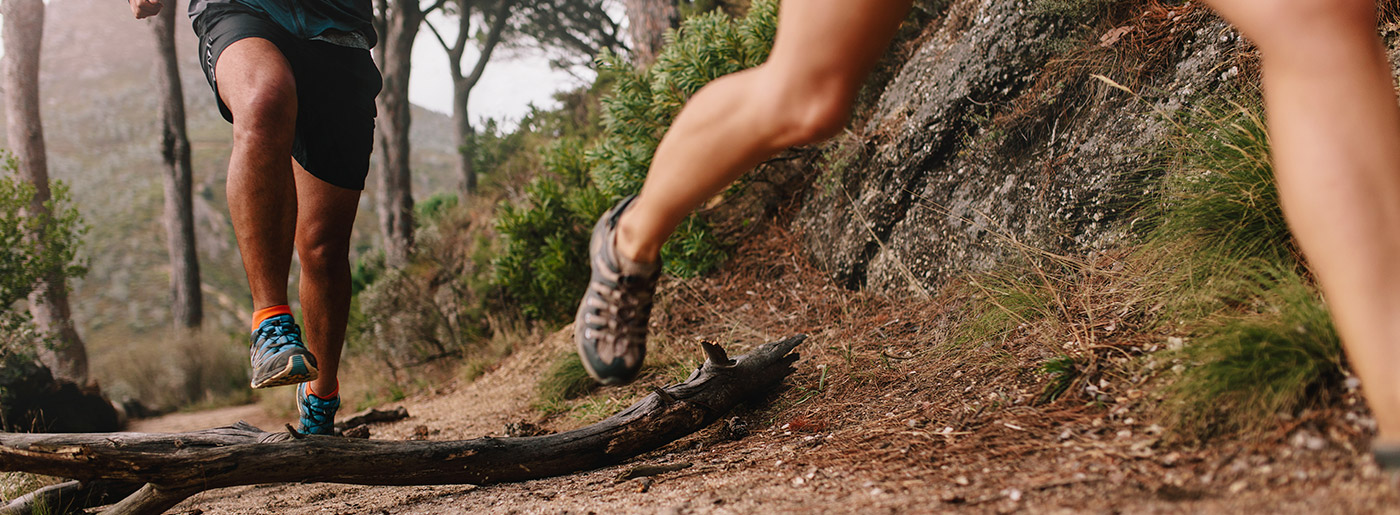Trail running offers some obvious (and surprising) benefits but is it all fun and games? For the most part, yes! But, we recommend you get to know the trail running 101 before you start trail running. Take a look at this trail runner’s checklist before you head for the trails.
1. Do some detective work before heading out
Familiarize yourself with the trails close to you.
Look at not only mileage but elevation and overall terrain. Read other runners’ reviews: is the trail hard to find and navigate, and did they find it physically challenging? Is it easy to find parking? What are the rules of the trail: can you bring a dog, is it single-track or double, do bikers yield to hikers or vice versa, are there bathrooms along the way, etc.?
Get acquainted with the trail you choose, and look for landmarks to remember.
Get acquainted with the trail you choose, and look for landmarks to remember: make a mental note that encountering a creek crossing around mile one or a steep uphill at mile three mean you are on the right path. Look for crossroads and learn which way you need to turn, in case the signs are poor.
2. Be realistic when choosing the route
Six miles on a treadmill can be a lot easier than six on the trail, where there are all sorts of natural obstacles like tree roots you have to hop over and hills you have to climb that make the workout harder.
Six miles on a treadmill can be a lot easier than six on the trail.
An unexpected change in weather like a sudden downpour or quickly rising temperature can make the run significantly more challenging.
When starting out trail running or when trying out a new trail, always play it safe when estimating the distance.
3. Bring essentials
Carry a map, water, and a snack like an energy bar, gel, or a bag of trail mix. If you choose not to take your phone with you (and let’s face it: one of the best things about hitting the trails is being out of reach), make sure someone knows where you are and also when you expect to be back.
Let’s face it: one of the best things about hitting the trails is being out of reach.
4. Run during daylight
Very few trails are lit by anything other than natural light, and being stranded in the woods in the dark can be both scary and dangerous. In hot weather, kick yourself out of bed early enough to get going as soon as the sun is up, rather than wait till late evening for the temperatures to drop.
5. Choose your shoes wisely
The main difference between a typical road running shoe and one designed for trails is that the latter is heavier and stiffer. Trail shoes act as a buffer between the bottom of your foot and things like sharp rocks, twigs, and pine cones often found on the trail.
Trail shoes act as a buffer between the bottom of your foot and things like sharp rocks.
The wide and low sole of the trail running shoe has an important function, too: it prevents your ankle from twisting easily.
6. Respect the trails
Shove the empty gel or bar wrapper in your shorts pocket and only leave your footsteps and sweatdrops in the nature. Be mindful of the animals you encounter. Some of them have become so used to trail users that they will allow you to come quite close.
Take a break and marvel at the beauty of a young doe, the slow trudging of a turtle crossing the path, or the wild turkey peeking at you behind a tree.
7. Improve your trail running skills
Make strength training a regular part of your training in the form of bodyweight training like push-ups and sit-ups, or squat and lunge with light weights – and don’t forget to strengthen your core. Incorporate balance workouts to the routine and try single-leg moves or using BOSU balls and wobble boards.
Add plyometric exercises to your weekly workouts and try squat jumps, tuck jumps, alternate leg bounding and lunge jumps. And on the days when the weather doesn’t favor training outdoors, be sure to dial up the incline on that treadmill.
Here are more tips for working on your strength:
Hips don’t lie | Strengthen your hips for running
How to run better | 5 + 2 exercises to build strength and speed
If you liked this post, don’t forget to share so that others can find it, too.
Or give it a thumbs up!
I like this article
Please note that the information provided in the Polar Blog articles cannot replace individual advice from health professionals. Please consult your physician before starting a new fitness program.




